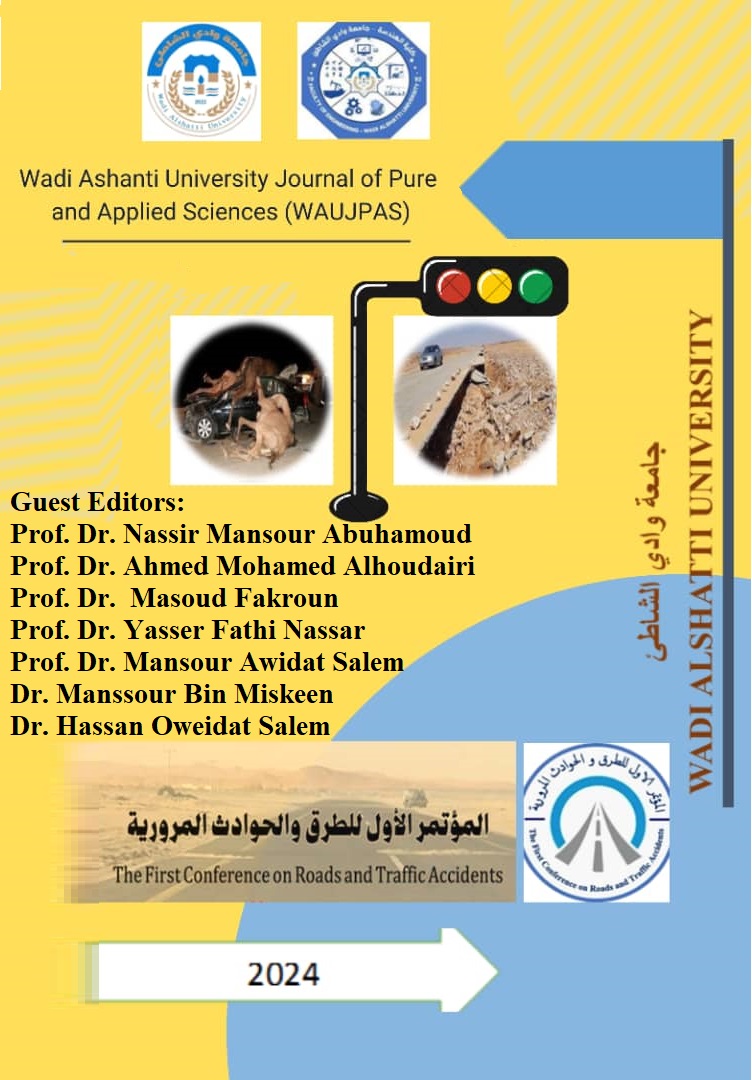The Impact of Roadway Cross-section Elements’ Design and Conditions on Road Safety: A Case Study of Alshwarif-Brack Road
DOI:
https://doi.org/10.63318/Keywords:
Road safety, Drivers’ behavior, Design elements, Cross-sections, SlopeAbstract
This study assesses the design and physical characteristics of cross-sectional elements on the road links connecting Alshwarif and Bark Alshatti cities and their influence on road safety, aiming to propose solutions by existing standards. Essential factors, including the design aspects of curves, gradients, and drainage systems, are analysed to assess their impact on collision frequency and overall safety. The research examines factors including road surfaces, lane and shoulder widths, guardrails, and lighting conditions. All these factors significantly influence driver behavior and the likelihood of collisions. This study provides evidence-based recommendations for enhanced road design and maintenance methods through field observations, survey work, and the integration of concepts from existing guidelines. The results of this study emphasize the need to repave the road and implement road layers according to the required standards, with a cross slope for lanes of at least 2%. Additionally, it is important to redesign horizontal curves by adding superelevation in accordance with AASHTO standards, along with providing wide shoulders and barriers to prevent off-road collisions, particularly at curves and elevated sections. The study also highlights the importance of properly implementing side drainage to reduce the risk of hydroplaning. The primary objective of these proposals is to enhance the safety of Alshwarif-Barck Alshatti road. This will help in reducing the likelihood of collisions and fatalities. It would also contribute to creating an improved roadway environment for all users.
Downloads
Downloads
Published
Issue
Section
License

This work is licensed under a Creative Commons Attribution-NonCommercial 4.0 International License.
This journal uses Creative Commons Attribution-Noncommerical 4.0 International License (CC BY-NC 4.0), which permits use, sharing, adaptation, distribution and reproduction in any medium or format, as long as you give appropriate credit to the original author(s) and the source, provide a link to the Creative Commons license, and indicate if changes were made. To view a copy of this license, visit https://creativecommons.org/licenses/by-nc/4.0/.
Copyright of articles
Authors retain copyright of their articles published in this journal.





